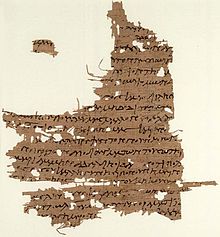At the time of Jesu the name of Mary was extremely common as one in four, or maybe even more, women was named "Mary". That fact has given rise to a lot of confusion, especially about one of the most important Biblical women, namely Mary Magdalen. She was the one whom Pope Gregory the Great
in the sixth century conflated with the anonymous "sinful" woman mentioned in the chapter before she's introduced in the Gospel of Luke. Was this pope right or was this just a clever action to curb the influence of women? After all, Mary Magdalen from The Bible was a female apostle who made the males jealous because they felt that Jesus loved her the most. Could she really be the same woman as the one who washed the feet of Jesus and afterwards dried them with her hair, the so-called "sinful" woman whom he forgave for her presumed sins????
No, she was not, but that special myth has always been exceedingly popular with male Christian theologians of all kinds and the scenery of the penitent beauty has been painted over and over by various (male) painters. Obviously most of them were so beset by the very idea of her "sinfulness" that they ended up sexualizing her in the extreme, seeing her "sinful" sex-appeal as the main part of the legend.
Anthony van Dyck
Half-naked, what can be more appropriate in a great artist's depiction of a "sinful", but penitent woman? (Whatever that is).

In protestant theology there are six Marys, the most important of them, as with the Catholics, being 1) the mother of Jesus. The others are 2) Mary of Bethany, 3) James' mother, 4) John Mark's mother, 5) Mary of Rome, and 6) Mary Magdalen who have gained a new importance as a saint when pope Francis declared her an acknowledged apostle in 2016. He wasn't even the first one who considered her to be a very important figure in the Jesu legends as Thomas Aquinas declared her "The apostle of the apostles" in the 13th century which is the official nomination she has regained now.
As it is she was one of the very first followers of Jesus, and, what's more important, she was the first one to witness his resurrection. Something which makes her very special theologically.
Even before the crucifixion she and Jesus were close and it's interesting that Peter, the apostle who became "the Cesar of the Catholic Church", i.e. the pope, had several fights with her. That happened because he resented the fact that she, being a woman, had her say with Jesus and the other apostles. Actually there were many power fights in the group of Jesu followers that stemmed from males resenting the devout females being close to Jesus, gaining influence over him, especially Mary Magdalen.
That happened more than 2000 years ago, but all of these fights took a new turn when the lost and forgotten "The Gospel of Mary" was discovered in a fifth-century papyrus codex in 1896. This gospel is a fragment in sahidic which is considered non-canonical as it has not become part of the official Bible. Maybe it was sort of "muted" by the males who fought the idea of the holiness of Mary Magdalen.
Gospel of Mary, P. Oxyrhynchus L 3525
However, since then two other fragments of "The Gospel of Mary" have been discovered, both written in Greek. However, it has been difficult to date these fragments so an important question remains: WHEN were they written, and by WHOM? Many scholars discuss this, but as far as I know there are no definite PROOFS of either date nor authorship. Some even suggest that the "Mary" of the gospel may be Jesu sister or someone else with the same name. However, Mary Magdalen is mentioned in several other Biblical scriptures like e.g. Luke 8:2, John 20:14-16, Matthew 27:56 and Mark 16:9. Levi defends Mary Magdalen and her teachings against the jealous and misogynist Peter: "Surely the Savior knows her very well. That is why he loved her more than us." According to some Jesus was - or became - married to Mary Magdalen, but where are the proofs? I haven't found any reliable evidence that that was the case, but according to one legend he survived the crucifixion and went to France with her as his wife. Their daughter became an ancestor of the royal house of France.
Well, that's an interesting "turn of the screw", but there is no doubt that we need more proofs, also about the so-called "skull of Mary Magdalen" that may - or may not - be genuine ....


%20(after)%20%20%20%20%20%20NY_YAG_YORAG_1171-001.jpg)


No comments:
Post a Comment